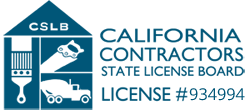
Mold is a type of fungi that can grow both indoors and outdoors. Mold can enter your home through open doors, windows, vents, and heating and air conditioning systems. Mold can also be carried into your home on clothing, shoes, bags, and pets. Mold thrives in damp, dark, and humid environments and can often be found in basements, bathrooms, kitchens, and laundry rooms.
Mold can cause various health problems, including allergic reactions, asthma, and respiratory infections. There are many different types of mold, and not all of them are harmful. However, some types of mold can cause serious health problems.
Here are some of the most common types of mold found in homes:
Stachybotrys chartarum
Stachybotrys chartarum is a greenish-black mold that can grow on materials with a high cellulose and low nitrogen content, such as fiberboard, gypsum board, paper, dust, and lint. When these materials become wet or damp, Stachybotrys begins to grow.
If stachybotrys is present in your home, it is important to have a professional remove it. This type of mold produces toxins called mycotoxins, which can cause serious health problems in humans, including respiratory problems, headaches, fever, and fatigue.
Aspergillus
Aspergillus is a large group of mold that can be found in both indoor and outdoor environments. It is a common type of mold that is often found in homes.
While most types of aspergillus are not harmful to humans, some can cause serious health problems. Aspergillosis is a lung infection caused by aspergillus. Symptoms include coughing, chest pain, and shortness of breath.
Penicillium
Penicillium is a type of mold that is often found in damp or moist areas. It can grow on food, paper, and fabrics.
Some types of penicillium can produce mycotoxins, which can cause respiratory problems, headaches, and fever in humans.
Alternaria
Alternaria is a type of mold that is commonly found in outdoor environments, such as in soil, on plants, and on decomposing organic matter.
It can also be found indoors, on carpets, in showers, and on damp walls. Some types of Alternaria can cause allergic reactions in humans, including hay fever and asthma.
Cladosporium
Cladosporium is a common type of mold that is found in indoor and outdoor environments. It can grow on various materials, including wood, paper, and fabric. Some species of Cladosporium produce mycotoxins that can cause respiratory problems in humans.
How to Prevent Mold Growth in Your Home
Mold can cause several health problems, so it’s important to take steps to prevent it from growing in your home. Some simple tips include:
- Keep your home clean and free of clutter.
- Fix any leaks in your plumbing or roof.
- Use a dehumidifier to keep indoor humidity levels low.
- Ventilate your home, especially in bathrooms and kitchens.
If you have a mold problem, it’s important to clean it up right away. You can clean small areas of mold yourself, but you may need to hire a professional for larger areas.
Conclusion
There are many different types of house mold, each with its own set of characteristics. Some common types of house mold include black mold, aspergillus, and Stachybotrys. Black mold is often found in damp, dark areas, and can cause serious health problems if inhaled. Aspergillus is a common type of mold found in homes, and can cause respiratory problems. Stachybotrys is a black mold that can be found in homes that have been affected by water damage. It is important to be aware of the different types of mold that can grow in your home, and to take steps to prevent and remove mold growth.
Restoration Masters is an independent, locally-owned, and -operated company serving Los Angeles, Orange, Riverside, and Ventura counties with full-service restoration for both residential and commercial buildings. From water damage clean-up to reconstruction, you can count on us. What sets us apart is our dependable service, quality workmanship, and certified restoration technicians. If you need mold remediation service in Torrance, CA, we’ve got you covered! Get in touch with us now and let us know how we can help!





